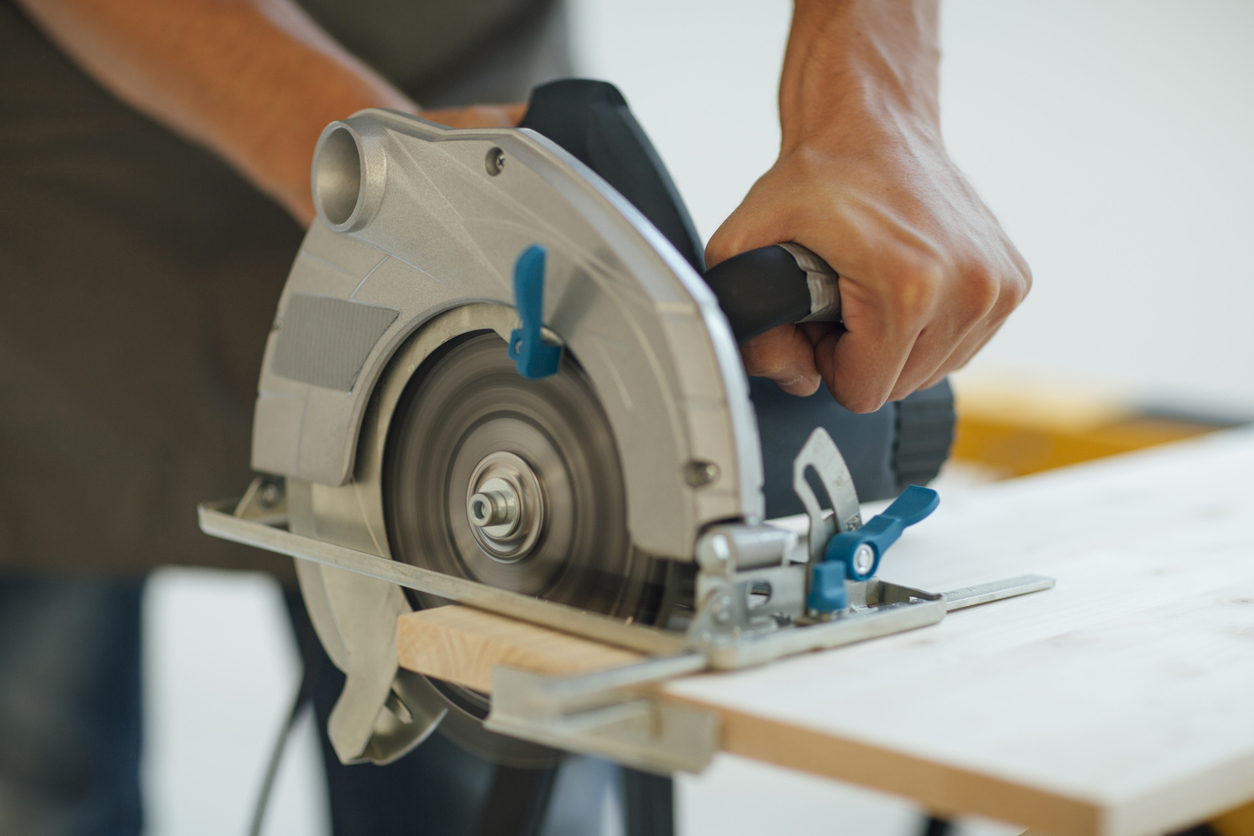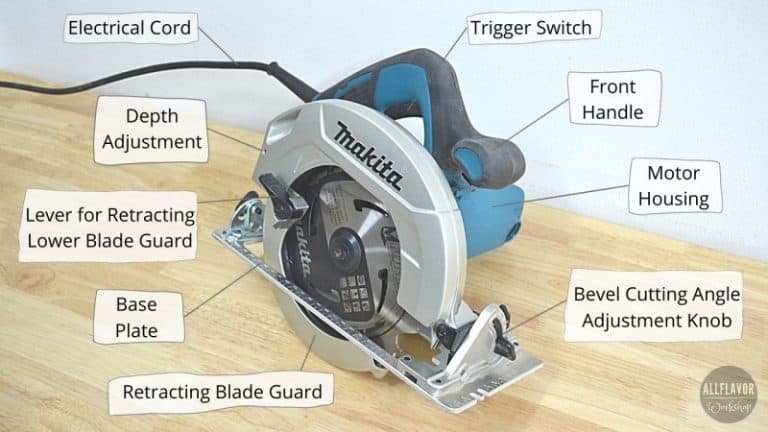If you’re looking to pick up some handy cutting skills, you’ve come to the right place! Today, we’re going to talk about what you should avoid when using a circular saw. Trust me, it’s essential to know the do’s and don’ts to stay safe and get the job done right. So, let’s dive right into it and explore some important tips!
Let’s face it, cutting with a circular saw can be exciting and satisfying. But before you start spinning that blade, there are a few things you should keep in mind. Safety should always be your number one priority, and that means avoiding certain actions that could lead to accidents or injuries. Don’t worry, though; we’ve got your back and will guide you through the potential pitfalls.
Now, you might wonder, “What are these things I need to avoid?” Well, my friend, that’s exactly what we’re here to discuss. Whether you’re a beginner or an experienced DIY enthusiast, it’s crucial to know the common mistakes that people make when operating a circular saw. This knowledge will not only protect you but also help you make clean, precise cuts every time. So, without further ado, let’s explore the things you should steer clear of when cutting with a circular saw!

What Should You Avoid When Cutting with a Circular Saw?
When it comes to using a circular saw, there are certain precautions and best practices that need to be followed to ensure safety and achieve accurate and clean cuts. Knowing what to avoid when using a circular saw is essential for both beginners and experienced users. In this article, we will explore seven key things that you should avoid when cutting with a circular saw, along with helpful tips and alternative approaches to make your cutting experience smoother and safer.
Avoiding Incorrect Blade Installation
One of the most crucial things to avoid when using a circular saw is incorrect blade installation. This can lead to a range of issues, including unstable cuts, binding of the blade, and even accidents. To avoid this, always double-check that the blade is placed securely and tightened properly before starting any cutting task. Make sure the blade is compatible with your saw and that it is facing the correct direction based on the manufacturer’s instructions. If you are unsure, refer to the saw’s user manual for guidance.
Additionally, regular blade maintenance is essential for optimal performance. Keep the blade clean and sharp to ensure smooth and precise cuts. Replace the blade if you notice any signs of wear or damage, as a dull or damaged blade can pose safety risks and hinder the quality of your cuts.
Avoiding Lack of Safety Gear
Another crucial aspect to avoid when cutting with a circular saw is neglecting the use of proper safety gear. This includes wearing protective eyewear, hearing protection, and gloves. Safety goggles or glasses protect your eyes from flying debris, while hearing protection helps minimize the noise produced by the saw. Gloves provide a secure grip and protect your hands from potential cuts or injuries.
Furthermore, it is essential to wear clothing that covers your arms and legs to prevent any accidental contact with the rotating blade. Loose clothing or jewelry should be avoided, as they can get caught in the saw’s moving parts. Prioritizing safety gear reduces the risk of accidents and ensures a safer cutting experience.
Avoiding Lack of Support for the Workpiece
Using a circular saw without proper support for the workpiece can result in inaccurate cuts and potential hazards. It is essential to ensure that your workpiece is adequately positioned and supported throughout the cutting process. Avoid freehand cutting, as it is difficult to maintain control and accuracy.
Consider using sawhorses, workbenches, or other supports to stabilize the workpiece. If you are cutting large materials, use additional support or have someone assist you in holding the piece firmly in place. This helps prevent the workpiece from shifting or tipping, reducing the risk of accidents and improving the overall quality of your cuts.
Avoiding Exceeding the Cutting Depth
When using a circular saw, it is crucial to avoid exceeding the cutting depth designed for your specific model. Each saw has a maximum cutting depth that should not be exceeded to maintain safe and optimal operation. Excessive cutting depth can cause the blade to bind, kickback, or even damage the saw.
Always adjust the cutting depth of the saw to match the material being cut. Start with a shallow depth and make multiple passes if necessary, gradually increasing the cutting depth. This approach ensures precise and controlled cuts, reduces strain on the saw, and extends the life of the blade.
Avoiding Inadequate Blade Guard Usage
The blade guard is a crucial safety feature of a circular saw that must not be bypassed or removed. It protects your hands from accidental contact with the blade and minimizes the risk of kickback. Avoid using a circular saw with a damaged or malfunctioning blade guard.
Ensure that the blade guard is properly adjusted and slides smoothly as you make your cuts. The guard should retract automatically as the saw moves away from the material and cover the blade completely when the saw is not in use. Regularly inspect and clean the blade guard to remove any debris or obstructions that may prevent its proper functioning.
Avoiding Poor Cutting Technique
Poor cutting technique can result in uneven, jagged, or dangerous cuts when using a circular saw. Avoid forcing the saw through the material, as this can lead to kickback and loss of control. Let the saw’s blade and motor do the work and guide the saw steadily and smoothly through the cut.
When making long cuts, use a straightedge or a guide to ensure accuracy and straight lines. This can be a clamped piece of wood or a specialized straightedge attachment designed for circular saws. Take your time and apply even pressure, allowing the saw to move along the guide without deviation.
Avoiding Ignoring Safety Guidelines
Lastly, it is crucial to avoid ignoring the safety guidelines provided by the manufacturer of your circular saw. These guidelines are specifically designed to ensure the safe and proper use of the tool. Familiarize yourself with the manual, warnings, and safety precautions before using the saw.
Follow the recommended operating procedures, including safety instructions and maintenance guidelines. This includes procedures for blade changes, maintenance tasks, and storage. Adhering to the manufacturer’s safety guidelines minimizes the risk of accidents and maximizes the lifespan of your circular saw.
Key Takeaways: What Should You Avoid When Cutting with a Circular Saw?
1. Avoid wearing loose clothing or jewelry that can get caught in the saw.
2. Be cautious of your hand placement and avoid placing them near the blade.
3. Never start the saw before securing the material being cut.
4. Do not force the saw through the material, let the blade do the work.
5. Avoid cutting through materials that are wet or contain foreign objects.
Frequently Asked Questions
Welcome to our FAQ section on what you should avoid when cutting with a circular saw! Below, we have answered some of the most commonly asked questions when it comes to using a circular saw safely and effectively. Don’t worry, we’ve got you covered!
What are the main safety precautions to take when using a circular saw?
When using a circular saw, safety should always be your top priority. To ensure your wellbeing, make sure to wear proper protective equipment like safety glasses, earplugs, and gloves. Keep your workspace clean and free of clutter to prevent accidents. It’s also important to never remove the blade guard and to ensure that the saw is disconnected from its power source when not in use. Lastly, take the time to familiarize yourself with the user manual and operating instructions to use the tool correctly.
Remember: By following these safety precautions, you can greatly reduce the risk of accidents or injuries while using a circular saw.
What type of material should I avoid cutting with a circular saw?
While a circular saw is a versatile tool, there are some materials you should avoid cutting with it. One such material is masonry, such as concrete or stone. Circular saws are not designed for cutting these materials, and attempting to do so can damage the saw’s blade and cause accidents. Additionally, be cautious when cutting metal as it can generate sparks, which can be hazardous. It’s recommended to use specialized tools for cutting these types of materials.
Pro tip: Stick to cutting materials that are compatible with a circular saw, such as wood, plywood, and medium-density fiberboard (MDF), for optimal results and safety.
What common mistakes should I avoid when using a circular saw?
When using a circular saw, there are a few common mistakes to avoid. First, never force the saw through the material you’re cutting. Let the saw’s blade do the work while applying steady, even pressure. Secondly, avoid using a dull or damaged blade as it can lead to kickbacks or uneven cuts. Regularly inspect the blade and replace it when necessary. Lastly, make sure the material you’re cutting is properly secured to prevent it from moving or shifting during the cutting process, which can result in inaccurate cuts or accidents.
Keep in mind: By avoiding these common mistakes, you’ll be able to use a circular saw more effectively and achieve better results.
How can I prevent kickbacks when using a circular saw?
Kickbacks can be dangerous when using a circular saw, but there are steps you can take to prevent them. First, make sure the blade is sharp and in good condition. Dull or damaged blades are more prone to kickbacks. Secondly, use a rip fence or guide to ensure straight and accurate cuts. This helps maintain control over the material and reduces the chances of a kickback. Lastly, always keep both hands on the saw’s handle and maintain a firm grip while cutting. This provides stability and control, minimizing the risk of kickbacks.
Remember: By following these preventive measures, you can significantly reduce the likelihood of kickbacks while using a circular saw.
What should I do if the circular saw blade gets stuck in the material?
If the circular saw blade gets stuck in the material you’re cutting, it’s important not to panic. First and foremost, turn off the saw and disconnect it from its power source. Attempting to forcefully free the blade while it’s still powered can be extremely dangerous. Next, carefully assess the situation and identify the cause of the blade getting stuck. It could be due to a misalignment, a knot in the wood, or an obstacle in the cutting path.
Pro tip: To safely remove a stuck blade, gently wiggle it back and forth while applying slight pressure in the opposite direction of the cut. If the blade remains stuck, seek assistance from a professional or an experienced individual to avoid any mishaps.

11 WORST CIRCULAR SAW MISTAKES!! And How To Avoid them…(DON’T DO THESE THINGS! Kickback/Binding)
Summary
Using a circular saw can be dangerous, so it’s important to know what to avoid. First, never wear loose clothing or jewelry that could get caught in the saw. Second, always use safety goggles to protect your eyes from flying debris. Third, never force the saw through the material – let it cut at its own pace. Lastly, make sure the saw is unplugged before changing the blade or making adjustments.
Remember, safety is key when using a circular saw. By avoiding these common mistakes, you can ensure a safer and more efficient cutting experience.
